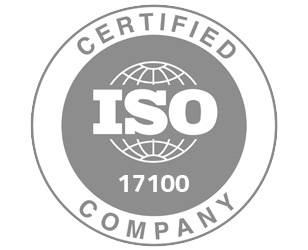.jpg)
How to Address Challenges in Esperanto Translation
Esperanto, a constructed international auxiliary language, was conceived in the late 19th century by L. L. Zamenhof. Its creation aimed at fostering better worldwide communication by being easy to learn, neutral, and inclusive. Its design boasts a highly regular grammar and a vocabulary derived primarily from European languages. Despite not being tied to any specific country or ethnic group, Esperanto has developed a vibrant community of speakers worldwide. However, translating in and out of Esperanto presents unique challenges that translation agencies must skillfully navigate.
Challenge 1: Limited Native Speakers
The pool of native Esperanto speakers, i.e., those who speak it from birth, is minimal. This poses a significant challenge because native fluency often brings an intuitive understanding of language nuances, which is rare in Esperanto.
Solution: Your agency can overcome this by hiring Esperanto language translators who, although not native speakers, have achieved a high level of fluency and are deeply involved in this community. Continuous professional development and active participation in Esperanto events can help maintain and sharpen their skills.
Challenge 2: Cultural Neutrality
Esperanto's design avoids any cultural bias, aiming to be an impartial linguistic tool. This neutrality is beneficial for straightforward texts but becomes a hurdle when translating material steeped in cultural nuances or specific to particular locales.
Solution: Agencies should train Esperanto translators to identify cultural nuances in source texts and find ways to convey these effectively. This often involves creative language skills and deep cultural understanding, requiring translators to perform cultural adaptation rather than direct translation.
Challenge 3: Specialized and Technical Vocabulary
As Esperanto is used globally across various fields, it encounters the need for a specialized vocabulary that may not yet be fully developed, especially in newer industries or niche technical areas.
Solution: Developing a comprehensive and evolving Esperanto terminology database is crucial. Collaboration with Esperanto-speaking experts in specialized fields can aid in creating accurate and acceptable new terms, ensuring that the Esperanto translation remains true to its principles of simplicity and universality.
Challenge 4: Variability and Consistency
Due to its decentralized nature, Esperanto usage can vary significantly among speakers from different regions. This variation can lead to inconsistencies in translations, particularly when multiple translators from different backgrounds work on similar projects.
Solution: Standardizing practices within your agency is key. Use resources like the "Plena Ilustrita Vortaro de Esperanto" and common guidelines to ensure consistency. Regular training and updates on evolving practices in the global Esperanto community are vital to accurately translate from Esperanto.
Esperanto translation, with its distinct challenges, demands a thoughtful and innovative approach. By understanding and effectively addressing these challenges, your agency can play a crucial role in fulfilling Esperanto’s mission of fostering global understanding and communication. This involves not only adapting to Esperanto’s linguistic features but also embracing its spirit of cultural neutrality and inclusivity.







